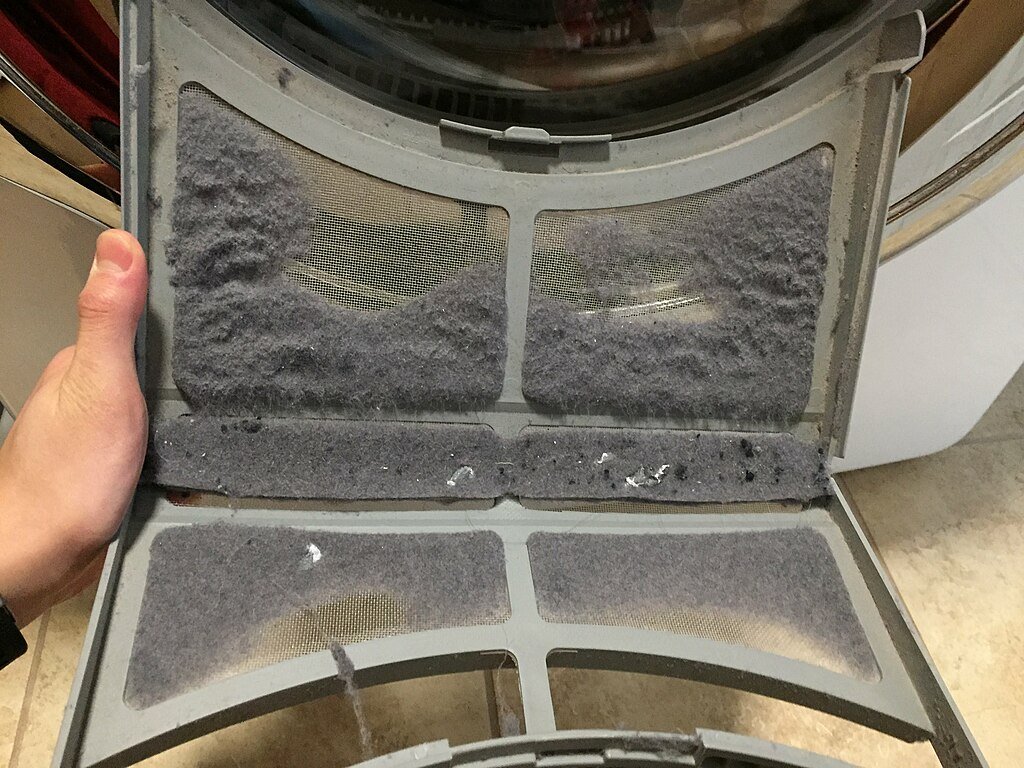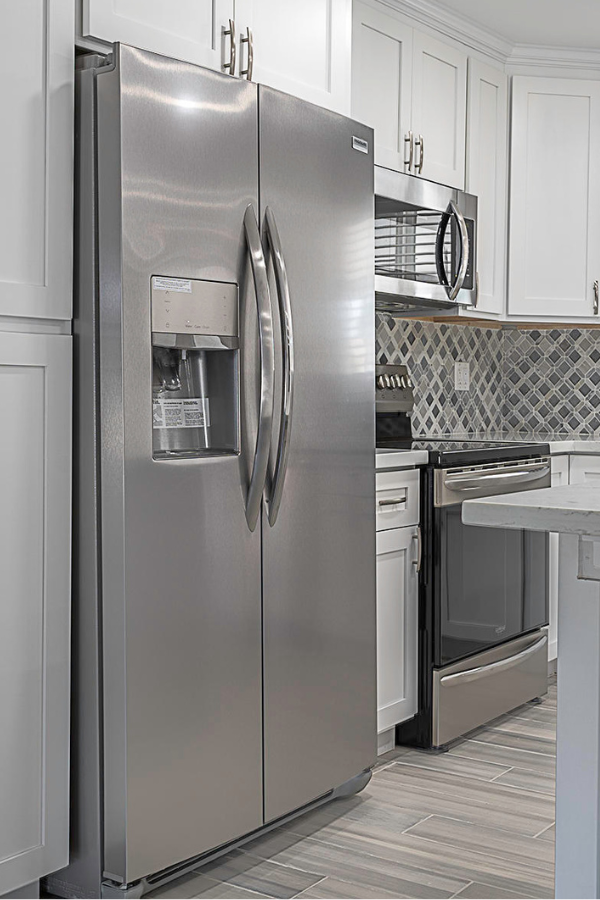Discover the Top Causes and Solutions
Is your dryer a ticking time bomb in your home? While we often take our appliances for granted, the reality is that a dryer left unchecked can pose a serious fire hazard. From lint buildup to overloaded loads, there are numerous factors that can turn your laundry routine into a nightmare. In this article, we'll delve into the common causes of dryer fires and provide practical tips on how you can prevent them. Don't let your dryer become a fire risk – read on to safeguard your home and family.
What Can Cause Your Dryer To Catch Fire?
There are many, many variables that can cause a dryer fire. Electrical components, high heat, a lack of maintenance, combustible materials, faults in the equipment, and even freak accidents.
Dryer fires are not as uncommon though as we might wish. It's so easy for us to ignore small signs that end up with big impact.
One of the biggest causes of dryer fires is due to lint buildup. This can be around the dryer frame, in the ducting, or even in the lint catch. If you do any camping, you might see people suggesting this lint as a way to start campfires. That gives you an idea of just how flammable and dry this material is. It's the bits of fluff and debris from your clothes as the dryer tumbles them and then dried out over and over until all that's necessary is a spark.
Your dryer can also catch fire if it is being overloaded consistently. We're not saying that the one time that you need to go and overload it is going to be the instance when everything catches fire. But if you're doing it consistently, your dryer will begin to struggle and grind, and possibly spark.
A fire can also happen if your dryer cannot breathe properly. If you have it boxed in with stuff on all sides or you have it pressed up against the wall, then the vents get clogged and the heat has nowhere to go except inside the dryer. All too easily, that becomes clothing overheating or that lint that we mentioned, and things catch fire.
Clothes being soaked in chemicals or oils are also a source. If you've ever worked in a kitchen or a shop, you know that you constantly need hand towels. To wipe up spills, to dry your hands off, to clean something. Now imagine somebody's distracted, and they toss them into the dryer because you need these right now, and you don't have time to wash them. We all know it, but chemicals and oils do not belong in your dryer. They will combust due to the heat.
You can also have a fire occur if the outlet isn't properly matched to the dryer plug. If you are trying to run a dryer on a standard house plug it can cause the outlet to spark because the dryer is pulling too much electricity through it.
There are also things that simply should not go into your dryer. A good example would be sneakers. Anything that is made of foam, plastic, or rubber does not belong in your dryer. These things can easily melt and combust.
One thing we do want to point out, though is that many people will point to the type of dryer being an issue. Talking about how a gas dryer is more dangerous than an electric. In fact according to the National Fire Protection Association, 78% of dryer fires are electric dryers. So while we will not say that gas dryers are completely safe, we will say that you should do your own research and consideration.
How You Can Prevent A Dryer Fire
The short answer for fire prevention is; to do the opposite of everything we listed up top.
If you want the longer and more in-depth version though, let's break it down.
Always make sure to clean the lint filter and screens after every cycle. Then, once a week or so, you can run a wet cloth around the inside of the drum and pick up anything that hasn't made it through. This cuts off one of the biggest causes of dryer fires before it has a chance to accumulate .
You should also hire a professional once a year to clean out the ducts and vents for your dryer. Although the filters catch most things, they don't catch everything. Some of that is going to go and get stuck in the ducting of the dryer, and it is as much a danger there as it is if it gets stuck inside the filter.
Don't put items made of foam, rubber, or plastic in your dryer. Yes, it might be faster to dry your sneakers in the dryer. But your dryer is not made for that. Yes we have covered dryers with specialized attachments to handle them. But that's the point, they are specialized features with that in mind to keep your dryer safe. Plastic is just straight out.
Don't overload your dryer with wet clothing. Your dryer is not meant to handle as much weight as we all think. About 2/3 of the way full is as much as you should ever be doing. 1/2 is better. And yes, that does mean that you'll be doing more loads of laundry but it also means you'll be preserving your dryer for much longer.
Keep the area around your dryer free of clutter. Whether it's boxes, toys, cleaning materials, just don't. Give your dryer room to breathe and, more importantly, to cool off.
Handle chemical and oil stains with care. If you are working on your car or frying lots of food in the kitchen, always pre-treat your clothes and wash them as thoroughly as possible before you ever put them near your dryer. More importantly, make sure to double-check the stain before you put it into the dryer. If it's not out after the first run through the wash, nothing says it has to go in the dryer. You can absolutely put it back into the wash or take it into your bathroom to give it another soak or a scrub by hand, which sure it's not fun, but again, this is less about fun and more about preventing fires.
What To Do If Your Dryer Catches On Fire
Heaven forbid that you ever encounter a fire in your dryer or near the electrical outlet, or in the venting, this is what you should do.
First off, stay as calm as possible. You can handle this. Even if handling this is calling in the professionals
Switch off your dryer if you can, either at the power switch or at the breaker.
Whatever you do, don't open the door to the dryer, as that's only going to feed oxygen to the flame. It will also release toxic gases into the air and your face.
Next up, grab your fire extinguisher, as we've mentioned in other posts you should ideally have one in your laundry room. An ABC fire extinguisher, is one that you can pull the pin, point at the base of the flames, and spray from side to side. Make sure that you get the back of the unit, if possible, as well.
Remove anything from near the dryer that could be an accelerant.
If that's not possible, evacuate the room, close the door, and call your fire department.
Extra Benefit Of Taking Care Of Your Dryer!
If treated properly, a dryer is a wonderfully useful appliance to have in your home, and compared to other sources, a dryer fire is rather uncommon. So, by making sure that you take care of your dryer, your dryer can take care of you. The additional benefit of regularly maintaining your dryer is a reduced utility bill. When your dryer can breathe properly it can dry clothes faster, and that means that you get more laundry done using less electricity. It also means that your dryer lasts longer.
Ultimately, dryer fires are just as destructive as any other fire type in the home. The good news is that you can prevent them. Be cautious and take care of your dryer; not only does it keep your dryer running longer, but it also keeps your home safe.
Don't wait for a disaster to strike. Schedule a yearly reminder to inspect your dryer's vents and ducts for any blockages. Additionally, educate yourself about the signs of dryer malfunction and take prompt action if you notice any irregularities. Your diligence could prevent a potential fire hazard in your home.
If your dryer is struggling despite following the maintenance tips we've suggested, give us a call. We will work with you to determine the issue and get your dryer running properly again. While we don't handle lint removal or duct cleaning, we can diagnose any electrical or mechanical issues that it might be having.
At Appliance Rescue Service our goal is to keep your home running smoothly. You can reach out to us via our website or by giving us a call ((214) 599-0055) and we will work with you to find a time and date that fits your needs to send our technicians your way.













